Last Wednesday marks a year since I launched the Rethinking Wellness podcast, though this project was actually in the works for almost twice as long. I couldn’t have gotten it off the ground without your support, and I’m deeply grateful to everyone who’s listened, read, shared, commented, or become a paid subscriber—the ultimate honor and vote of confidence. But I’m not sure this platform would exist at all if it weren’t for someone else, someone who’s not even aware of her contribution. I came up with the idea shortly after my daughter was born, and in my mind these two births are inextricably linked.
In the long, quiet hours of the night during her early weeks of life, I often sat feeding her while staring into space, reflecting on my hopes and fears for her, for us, for the world she was born into. At that point I’d already written and rewritten the manuscript that would become The Wellness Trap, and I knew that misinformation and disinformation were huge threats to our individual and collective well-being. I understood how our skewed information environment incentivizes the reflexive sharing of novel and controversial takes instead of critical thinking and deliberation, and reflected on how I myself was sucked into that dynamic against my will. I’d explored how false claims and bizarre wellness trends are becoming more extreme and more pervasive thanks to the influence of algorithms that hijack our attention and reward the production of anxiety, outrage, and reactivity. I knew the lack of trust in institutions—which is partly due to their real failures—has led many people to discount science and medicine in favor of unsubstantiated practices peddled by influencers and alternative practitioners, who purport to be immune to the flaws of the conventional healthcare system but often do more harm.
All these ideas had been swirling in my head for years, but in the crucible of those wakeful nights they began to take a new shape. I started to rethink how I wanted to show up in the world.
Having a child affects everyone differently. I know some moms who felt moved to start doing anti-diet activism when they had daughters, wanting to help safeguard their children from the cultural weight stigma and interpersonal body shaming they’d grown up with. I want that for my daughter, too, and for kids and people of all ages. But for me, personally, the activist stance I’d fallen into without realizing it no longer felt right.
Giving birth had broken me open in every way imaginable. There was the usual physical stuff, with some twists: I had a traumatic birth experience involving an extremely long labor and an unplanned C-section, followed by a nasty intestinal paralysis that prolonged my stay in the hospital and my recovery. And then there were the emotional repercussions: Through some combination of postpartum hormones, trauma responses, and sleep deprivation, my already high sensitivity was turned up to an almost unbearable level. I didn’t officially have postpartum depression or anxiety; I just became a walking nerve, with a new and painful awareness of beauty, heartache, complexity, uncertainty. It was hard to get through a bedtime story or even a commercial break without shedding some tears.
This ultrasensitivity has lessened a bit with time, but it still left me permanently changed. I started to feel almost allergic to the stridency and meme-ishness of some of my previous work, and to the toxic tear-each-other-down energy of some online spaces I was once a part of. Overall I still stand behind my work in Anti-Diet and Food Psych—it’s based on solid scientific evidence and informed by my clinical experience and interviews with people whose perspectives are invaluable—but I wish I’d been more nuanced in my delivery. I used words like “most” when I should have said “many,” “can” when I should have said “could,” “is” when I should have said “may be,” as scientists do—because all evidence is inherently limited. I omitted qualifying words that would have made my arguments less punchy but ultimately more able to withstand scrutiny. In letting myself be influenced by the norms of our algorithm-driven media environment, I’d strayed from journalistic rigor and started sounding more like an influencer. And I realized that wasn’t in line with who I am or the contribution I want to make to the discourse.
To stay true to my values, I knew I had to switch gears. Even though my daughter wasn’t old enough to read my writing or listen to my podcasts, I couldn’t stop thinking about how the content I created would contribute in some small way to the culture she’d inherit. I wanted to be a source of thoughtfulness, calm, and deliberation for her, as my mom often was for me as a kid, in a culture that’s even more starved for those things than the one I grew up in.
I began to dream about starting a new podcast, to build on the ideas from The Wellness Trap and create a home for the more-nuanced conversations I wanted to have. Things moved quickly at first—I even commissioned the album art while I was still on maternity leave. But then I went back to work and dove into revisions for the book, and Rethinking Wellness took a backseat for several months.
I restarted Food Psych and did a season of mostly solo episodes that felt really aligned with my new approach, but I still craved a space to discuss more than just our relationships with food. I wanted to continue deconstructing wellness culture—not only talking about its links to disordered eating and diet culture, but also about the lack of sound evidence behind many popular integrative- and functional-medicine claims, the rise of wellness mis- and disinformation and the role of social media in spreading it, how the failings of the conventional healthcare system make people vulnerable to the false promises of wellness, how to avoid falling for wellness scams, and more.
I finally launched Rethinking Wellness on March 13, 2023, with three interviews: Natalia Mehlman Petrzela on fitness culture, Casey Gueren on health anxiety and avoiding misinformation, and Jenee Desmond-Harris on the intersection of infertility and wellness culture.
The launch was ten years to the day from when I started working on Food Psych, which felt significant. A few months later I turned Rethinking Wellness into a written newsletter, too. I was excited to keep exploring the promises and pitfalls of wellness culture, and hopefully offer a compassionately skeptical approach that might help people (including, eventually, my daughter) think critically and avoid falling into wellness traps.
I don’t know that I’ve truly figured out how to do that yet, but I’m following my curiosity and feeling a lot more energized by my work than I have in years. At the start of my journalism career more than two decades ago, I learned to use my interest as a bellwether: If I was curious about something, there’s a good chance my readers would be, too. That skill has served me well in many ways, though it’s not infallible—and probably not a great path to fame or fortune in a media environment that rewards hot takes and strident claims. “There’s a loneliness in being someone who’s willing to tolerate the discomfort of not knowing and of skepticism,” writing coach
told me in January, in one of the 1:1 sessions for her Mother the Mother program. “People want answers—it’s so much easier to have answers.”Sometimes I do have answers, and it’s true that those are often among our top pieces of content. Two months ago, a reader asked for my opinion on Netflix’s latest diet documentary, You Are What You Eat, and my answer quickly rocketed up to become our second-most-popular piece. Another Q&A answering two questions about gut health (one in front of the paywall and one behind it) is still holding strong in the #4 spot more than eight months after publication.
But other types of content have done well, too. It turns out that my essays about questions I’m grappling with seem to strike a chord. As I write this on March 5, the #1 piece of content is an essay I wrote on the relationship between intuition and science. (It also has a Q&A portion at the bottom, but the answer is behind the paywall, so I don’t think that contributed much to its popularity with the broader audience.) And my piece from last month about my anxious gut rose to the #2 spot within just a few weeks, bumping the one about the Netflix doc down to #3.
It’s exciting to see content about gut health resonating with people because it’s a subject of both professional and personal curiosity for me, and something I have a lot more to say about. So much, in fact, that late last year I even pitched a book about it, framed as a skeptic’s guide to gut health. My publisher turned it down, in part because the timing was bad (coming after some turnover at the imprint), and in part because they didn’t see the appeal. “There are some myths that people just want to believe,” the feedback went, “and if they are skeptics, they don’t need a book to prove their skepticism.”
My agent understood the publisher’s concern, and after a good cry and a few days of feeling lost (this being one of the many 2023 setbacks I alluded to here), I decided to let the idea go for the time being. In my experience, book ideas have a way of bubbling back up if they’re meant to be—I was circling around the themes in Anti-Diet for nearly a decade and went through several different book proposals and agents before I finally found the right packaging and publisher. But I still think there’s something there with the gut-health idea, and whether it eventually becomes a book with another imprint or just an ongoing series for this newsletter/podcast, I’m not going to stop bringing a critical eye to the heavily hyped gut-health trend.
Finally, our #5 piece of content right now is a bonus episode with dietitian Leah Kern about how to avoid wellness traps when you care about health and the environment. That also feels exciting, because I’m starting to see a theme emerging: Like our #1 piece on intuition and science or this piece from August about how to be skeptical of diet culture without falling for conspiracy theories (which is currently at #7), it’s about taking a nuanced approach to information and being thoughtful even in how you approach critical thinking.
Those are exactly the kinds of things I was hoping to explore with this platform, and it seems like many of you find them compelling, too.
My year of Rethinking Wellness has also taught me what isn’t working so well, and the biggest thing is the standalone bonus interviews (the above-mentioned episode being the exception that proves the rule). I started doing these bonuses when we were on a biweekly schedule to give some additional content to paid subscribers, and I think they worked well in that context. But now that the podcast is coming out weekly, the bonuses have started to feel like they’re clogging up the feed—especially on weeks when we have a Wednesday essay or Q&A, too. And they can feel like both too much and too little, because although there are a lot of them, they’re also fairly short.
So I’ve decided to experiment with a new way of doing the bonus content. Starting this week, we’ve replaced the standalone bonus interviews with extended versions of the main episodes for paid subscribers. Free subscribers will still get to hear most of the conversation (which might be around 40 minutes to an hour, depending on the episode), but there’ll be a whole lot more behind the paywall, with deeper dives, more-personal questions, and takeaways about how to apply the ideas. Paid subscribers will get more exclusive content than they did with the old bonuses, and now the listening experience will be seamless—no more waiting until Fridays for the rest of the interview to drop (just set up your private feed to get it in your podcast player).
We’re still publishing Q&As and/or essays every other week, and I’m hoping to do some occasional bonuses for paid subscribers in the off weeks. These newsletters are also available as podcast episodes—and now those will sound a lot better, because my amazing producers at Softer Sounds have started producing them (instead of me doing it on the fly as I had been before).
If you’ve made it this far, thanks so much for reading, for supporting my work, and for coming along on this new adventure. For me, Rethinking Wellness has been interwoven with rethinking what I cover and how I show up, and I’m grateful that many of you are on board (and perhaps rethinking things in your own life in similar ways). It can be hard to evolve as a writer/creator when you’ve become known primarily for one thing, but you’ve helped show me that it’s possible.
Here’s to evolution, and to another year!


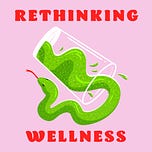


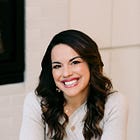
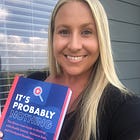

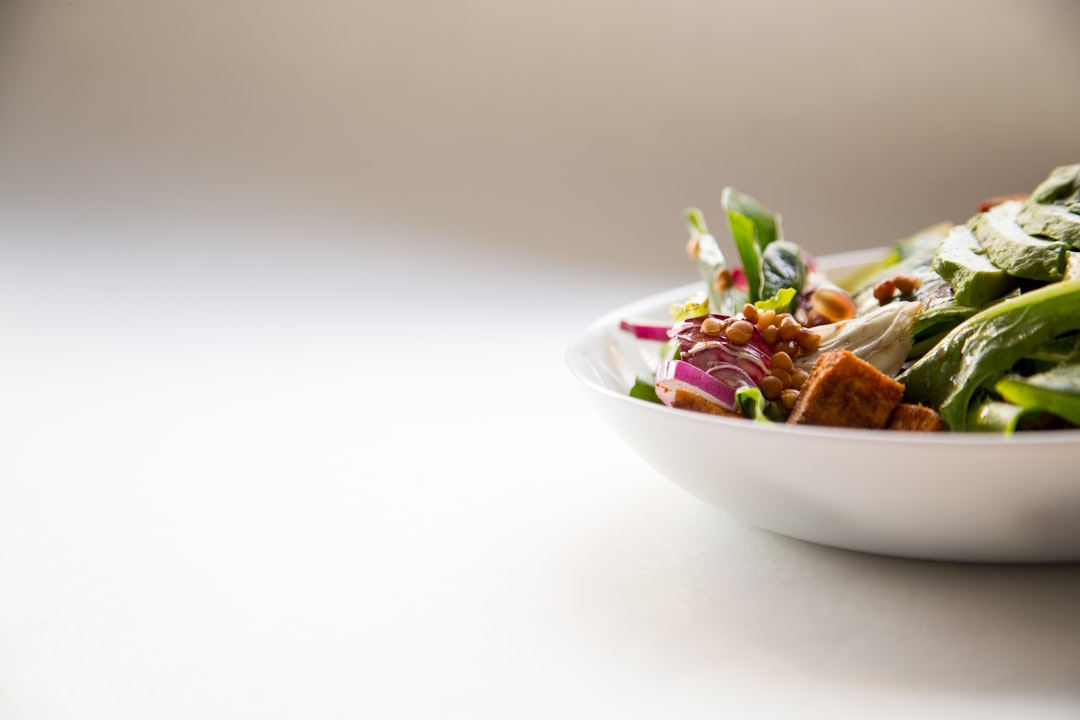








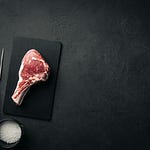





Share this post